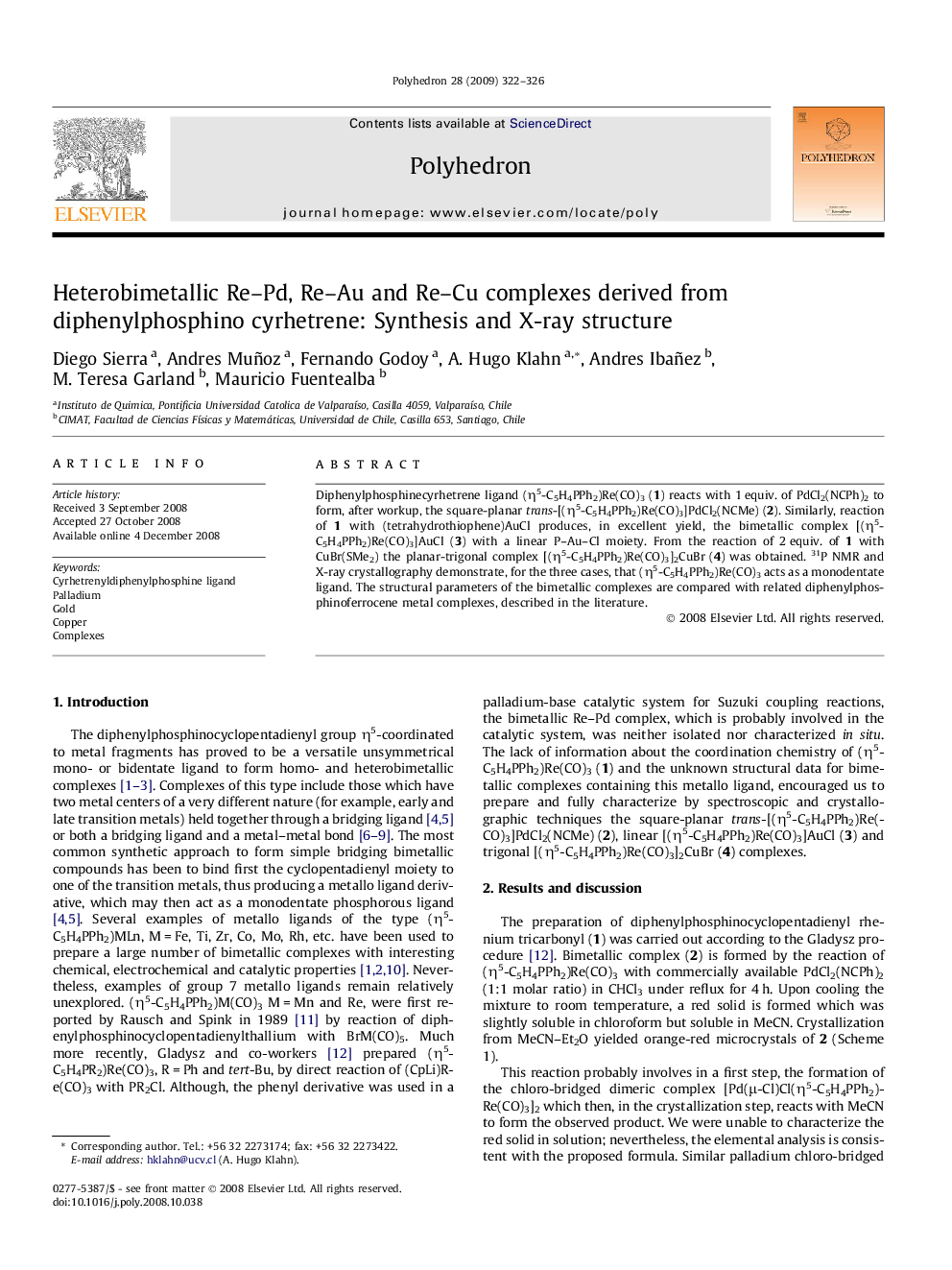| Article ID | Journal | Published Year | Pages | File Type |
|---|---|---|---|---|
| 1339043 | Polyhedron | 2009 | 5 Pages |
Diphenylphosphinecyrhetrene ligand (η5-C5H4PPh2)Re(CO)3 (1) reacts with 1 equiv. of PdCl2(NCPh)2 to form, after workup, the square-planar trans-[(η5-C5H4PPh2)Re(CO)3]PdCl2(NCMe) (2). Similarly, reaction of 1 with (tetrahydrothiophene)AuCl produces, in excellent yield, the bimetallic complex [(η5-C5H4PPh2)Re(CO)3]AuCl (3) with a linear P–Au–Cl moiety. From the reaction of 2 equiv. of 1 with CuBr(SMe2) the planar-trigonal complex [(η5-C5H4PPh2)Re(CO)3]2CuBr (4) was obtained. 31P NMR and X-ray crystallography demonstrate, for the three cases, that (η5-C5H4PPh2)Re(CO)3 acts as a monodentate ligand. The structural parameters of the bimetallic complexes are compared with related diphenylphosphinoferrocene metal complexes, described in the literature.
Graphical abstractThe square-planar trans-[(η5-C5H4PPh2)Re(CO)3]PdCl2(NCMe) (2), linear [(η5-C5H4PPh2)Re(CO)3]AuCl (3) and trigonal [(η5-C5H4PPh2)Re(CO)3]2CuBr (4) complexes are formed by coordination of diphenylphosphinocyrhetrene ligand (η5-C5H4PPh2)Re(CO)3(1) to Pd(II), Au(I) and Cu(I) metal centers. The products were characterized by spectroscopy and X-ray crystallography.Figure optionsDownload full-size imageDownload as PowerPoint slide
